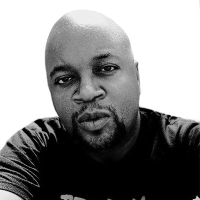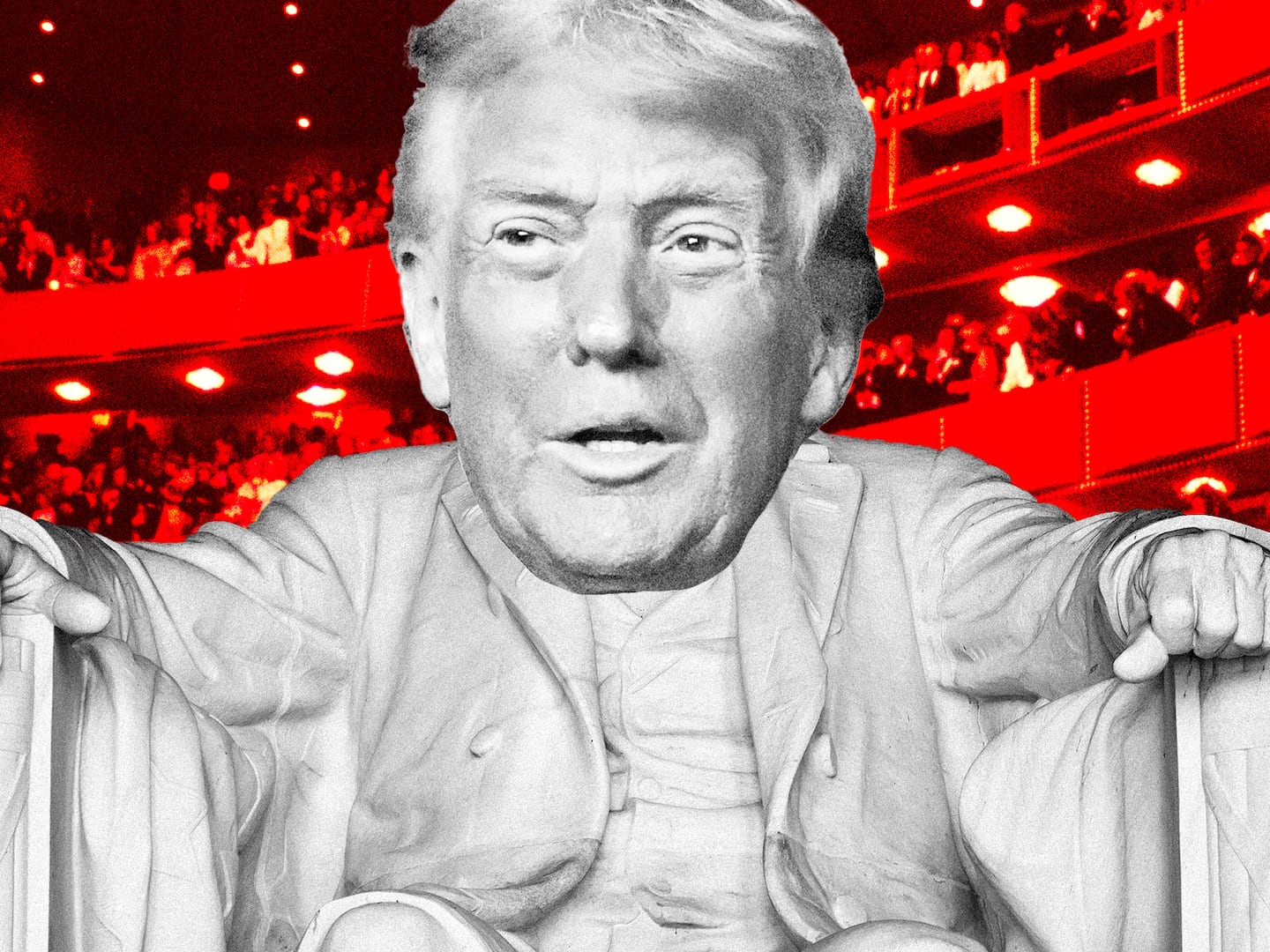The loss of David Bowie is still being felt around the world, with fans—both the famous and not-so-famous—acknowledging how much the legendary rocker’s music and creativity have impacted them over the course of his six-decade career. Bowie’s enigmatic, malleable personas make him endlessly fascinating.
A video clip of Bowie’s infamous 1983 exchange with MTV VJ Mark Goodman has gone viral in the wake of his death. During the interview, Bowie reverses roles and begins quizzing Goodman about MTV’s lack of support for black artists.
“There seem to be a lot of black artists making very good videos that I’m surprised aren’t being used on MTV.”
Goodman defended it as “narrowcasting.”
“The few black artists one does see are on around 2:30 in the morning until about 6,” Bowie added. “I’ll say that over the last couple of weeks these things have been changing, but it’s a slow process.”
Goodman goes on to try to defend the network, but only seems to defend MTV’s racism as an extension of the racism of its perceived audience.
“We grew up in an era when the Isley Brothers mean something to me—or the Spinners… but what does it mean to a 17-year-old?”
“I can tell you what the Isley Brothers or Marvin Gaye mean to a black 17-year-old and surely he’s part of America as well,” Bowie shot back.
It would be easy to overpraise a white superstar for acknowledging racism on any level; we tend to become enamored with those in positions of societal privilege who both recognize that privilege and are willing to challenge systematic oppression. A man who is vocal on women’s rights issues gains loud applause for saying what women consistently say for themselves. Straight people superficially “standing up” for the LGBTQ community become as lauded as the most battle-scared gay activists, and white people who call out white supremacy can be heralded as “progressive” just because the system ignored the protests of the black people it routinely oppresses. But Bowie’s journey as it pertains to race is intriguing because it takes so many confounding twists and turns; most notably, how does one go from immersing their music in the funk and soul sounds of Young Americans to indulging a Nazism and fascism fetish to speaking out consistently about race and racism? It may be the most fascinating element in Bowie’s famously ever-changing persona and outlook.
Following the breakthrough of his Ziggy Stardust album and the success of Aladdin Sane, Bowie retreated from the glam rock he’d helped popularize into American R&B. With help from funk guitarist Carlos Alomar and vocalist/songwriter Luther Vandross, Bowie dove headfirst into funk and Philly soul—or his closest approximation of it.
“I started making little vocal arrangements and showing them to [Alomar’s wife and famed session vocalist] Robin,” Vandross recalled in a 1983 interview with Black Collegian. “I didn’t know that Bowie had overheard all this. He was sitting right behind me at the board, and he said, ‘That’s a great idea. Put that down.’ So I put it down and next thing you know one thing led to another, and I was doing the vocal arrangements for the whole album. I wrote one of the songs on the album. Bowie overheard it and said, ‘I want to record that. Do you mind?’
“Bowie made me go out and do an opening 45-minute act for him every night with my own material,” Vandross shared. “I remember the first night I went onstage and did my thing. Some of the people, it was scattered, were shouting ‘Bowie, Bowie.’ That was very disconcerting to me that night. Bowie said, ‘Please. Later for these people. Later for them. You go out there and get your art together.’”
1975’s Young Americans gave Bowie his first big pop hits in America with the title track and the John Lennon-assisted No. 1 hit “Fame,” but by the time of its release, he’d been living in New York City and begun sessions for Station To Station. The lead single “Golden Years” continued in Bowie’s funk vein and he performed it and “Fame” during a famous appearance on Soul Train that year—later revealing he was intoxicated the entire time, having gotten drunk to calm his nerves.
Despite the grooves on “Golden Years” and the Soul Train appearance, the Station To Station album was the beginning of Bowie’s transition into his next phase musically and his next, stranger persona. He was starting to embrace more quasi-European sounds like krautrock and colder, more detached, synth-driven music. But his addictions were sending him to a dark place.
It has been well-documented that Bowie was intrigued by Nazi imagery in the coke-addled period following Young Americans. He’d been introduced to German history by British writer Christopher Isherwood, whom Bowie had met after a concert in Los Angeles in 1974. It was two years before he actually moved to West Berlin—following an intensely dark period where he created his cold “Thin White Duke” persona, was terribly addicted to cocaine, flirting with the occult, surviving on red peppers and milk, and making bizarre claims in the press about Hitler and how fascism could help Britain. He was detained in Poland for traveling with Nazi paraphernalia. And in 1976 came the infamous “Victoria Station incident” when Bowie was pictured giving what appeared to be a Nazi salute—a claim he consistently denied.

His time in West Berlin seemed to turn him against fascism. His mythologizing of the city had been tied to his romanticizing of “old Europe,” born of disillusionment with America and with standard rock music. Bowie later blamed his Nazi fetish on drugs and “crazed” quotes, and it could be argued that he was more into the indulgences of fascism than the ideology; but his image change coincided with the rise of extreme right hate groups in England, and both he and Eric Clapton (who delivered a notoriously racist rant at a Birmingham concert in 1976, the same year as Bowie’s infamous salute) were name-dropped by those who’d organized Rock Against Racism as reasons for the organization’s inception.
But Bowie-as-racist seemed to contradict so much of who he’d been previously and where he would go in the coming decade. After all, from 1974-1978, Bowie was involved romantically with Motown singer Ava Cherry, aka Black Barbarella. Some of his problematic behavior was blamed on drugs, some on the “Thin White Duke” persona he’d adopted. During his final days in Berlin, the singer had seen his name sprayed on a wall (some have suggested it was the Berlin Wall, but that wasn’t confirmed) and the last two letters were framed in a swastika. It disturbed him to see himself linked so explicitly to Nazism and any appeal the imagery had became troubling. Dabbling in the darkness was not going to be his approach going forward, and references to fascism and the occult disappeared from his persona altogether. By 1979, Bowie had dropped the Duke image and referred to it as “a nasty character for me.” By the early 1980s, he was clean, divorced (from his first wife, Angie), and healthy.
He was in New York, working with superproducer Nile Rodgers on what would become a huge crossover album for his career. Let’s Dance was Bowie “going Black” again and he sounded more comfortable than he had on the somewhat contrived Young Americans from seven years earlier. Bowie was at his most avant-garde during the rise of disco, and the disdain for that genre expressed by many rock fans was rooted in the kind of racial prejudice hinted at in the Goodman interview. But Bowie, the rock veteran, tapped the producer who’d made the best records of the disco era to produce his new album long after disco’s heyday. “At the time in my life that I was persona non grata, when no one would work with me because of ‘Disco Sucks,’” Rodgers recalled shortly after Bowie’s death, “this guy, who was considered one of the great, innovative rockers, picked a disco guy, who nobody wanted to work with, to collaborate with, and we wound up making the biggest record of his career.
“David listened to me. I remember once explaining to him how, for me, as a black artist, it was very difficult for me to get hits, because we had fewer radio stations to expose our music. So to get attention, a technique of mine was I always started my songs with the chorus: ‘Ahhh, freak out!’ and ‘We are family!’ And then, of course, there’s ‘Let’s Dance.’ So when David gave me this award—for the Archive of Contemporary Music—he said: ‘To my friend, Nile Rodgers: the only man who could make me start a song with a chorus.’”
Rodgers helped reinvigorate Bowie in the music video era and the high-profile success Bowie had suddenly attained may have frustrated him later, but it initially sparked a spirit of advocacy. It was during this period that Bowie had become fairly outspoken on the issue of racism.
“As much as I love this country, it’s probably one of the most racially intolerant in the world, well in line with South Africa,” he told Rolling Stone in 1983 when discussing his time in Australia. “I mean, in the north, there’s unbelievable intolerance. The Aborigines can’t even buy their drinks in the same bars—they have to go round the back and get them through what’s called a ‘dog hatch.’ And then they’re forbidden from drinking them on the same side of the street as the bar; they have to go to the other side of the road.
“It occurred to me that one doesn’t have much time on the planet, you know?” he stated. “And that I could do something more useful in terms of... I know this is very cliché, but I feel that now that I’m 36 years old, and I’ve got a certain position, I want to start utilizing that position to the benefit of my... brotherhood and sisterhood.” He winces, but continues. “I’ve found it’s very easy to be successful in other terms, but I think you can’t keep on being an artist without actually saying anything more than, ‘Well, this is an interesting way of looking at things.’
“There is also a right way of looking at things: there’s a lot of injustice. So let’s, you know, say something about it. However naff it comes off.”
When discussing the concepts behind the videos from the album, Bowie made it clear: “Very simple, very direct. They’re almost like Russian social realism, very naive. And the message that they have is very simple—it’s wrong to be racist!” The video for “Let’s Dance” focused on an indigenous couple in Australia (with references to slavery and Aboriginal children who’d been kidnapped) but the “China Girl” video was more uncomfortable, bordering on the fetishizing of “exotic” Asian womanhood in what was supposed to be a message about interracial love.
Bowie would spend the rest of the ’80s wrestling with MTV-era stardom before marrying Somalian supermodel and philanthropist Iman in the early 1990s.During a 1993 appearance on The Arsenio Hall Show, Bowie was asked whether he or Iman had ever been given a hard time for being in an interracial relationship.

“That’s a very strange situation for me because I think with both of us, having the so-called celebrity status attached to us, I think the moment we step out the doors we’re known more as David and Iman, so I’m not sure what it would be like for us,” said Bowie. “Funnily enough, you don’t see that many mixed couples in America. In Europe, there are a lot of mixed couples. Over here it’s still a rarity; there’s still this great separatist kind of thing over here. So I don’t know what it would be like for us if we weren’t known in our own right. You get the odd snide remark, but nothing of any weight.”
“It doesn’t bug you, though?” Arsenio prodded.
“It would do, yeah. It would bug me a lot,” Bowie replied. “I’d get mad. I’d hit him like a lorry driver—no, like a truck driver!” Later on in the interview, Arsenio would praise Bowie for donating the proceeds from his single “Black Tie White Noise” to an educational center for at-risk black kids.
That same year, Bowie was interviewed on the Today show, where he expressed his admiration for hip-hop’s topicality.
“You were saying that the only people in the music business now in your opinion who were being truly creative were the rappers,” host Bryant Gumbel asked.
“Yes, I believe that’s so,” Bowie responded. “The quality and significance of the social message has moved very much to the black and Hispanic market. And that’s where the new force of music is coming from... With black music, there’s a very strong social point to make. There’s a means of discovery and a purpose.”
In 2007, when six black teens were charged in an alleged attack on a white classmate in the tiny central Louisiana town of Jena, Bowie contributed $10,000 to a legal defense fund for the youngsters, who’d been targeted with hate crimes prior to the incident.
Bowie’s history with race and racism is, much like everything else in his public life, a study in phases. Whether you want to declare him “progressive” is debatable, but he seemed to at least believe in the redemption that could come from addressing ills as he saw them; especially as they affected music and art. His Nazi flirtations stand in sharp contrast to who he’d been throughout his life, but they mark a necessary part of his evolution. In delving deep into the darkest facets of Eurocentricity and white supremacy, maybe Bowie saw an ugliness staring back at him that he couldn’t stomach. It would be cynical to dismiss his public statements as simple PR moves even as he was decades removed from The Thin White Duke period, but it would be naïve to assume he didn’t have to work to unpack whatever he’d absorbed ideologically in the mid-1970s.
Regardless, it’s worth noting that this man was able to address issues that so many of today’s white superstars seem all too eager to run from. In an age where racism is such an urgent part of the national conversation, maybe America could use a few more David Bowies standing alongside the black and brown artists fighting for change. We don’t need you to speak for us, but that doesn’t mean you should remain silent.






